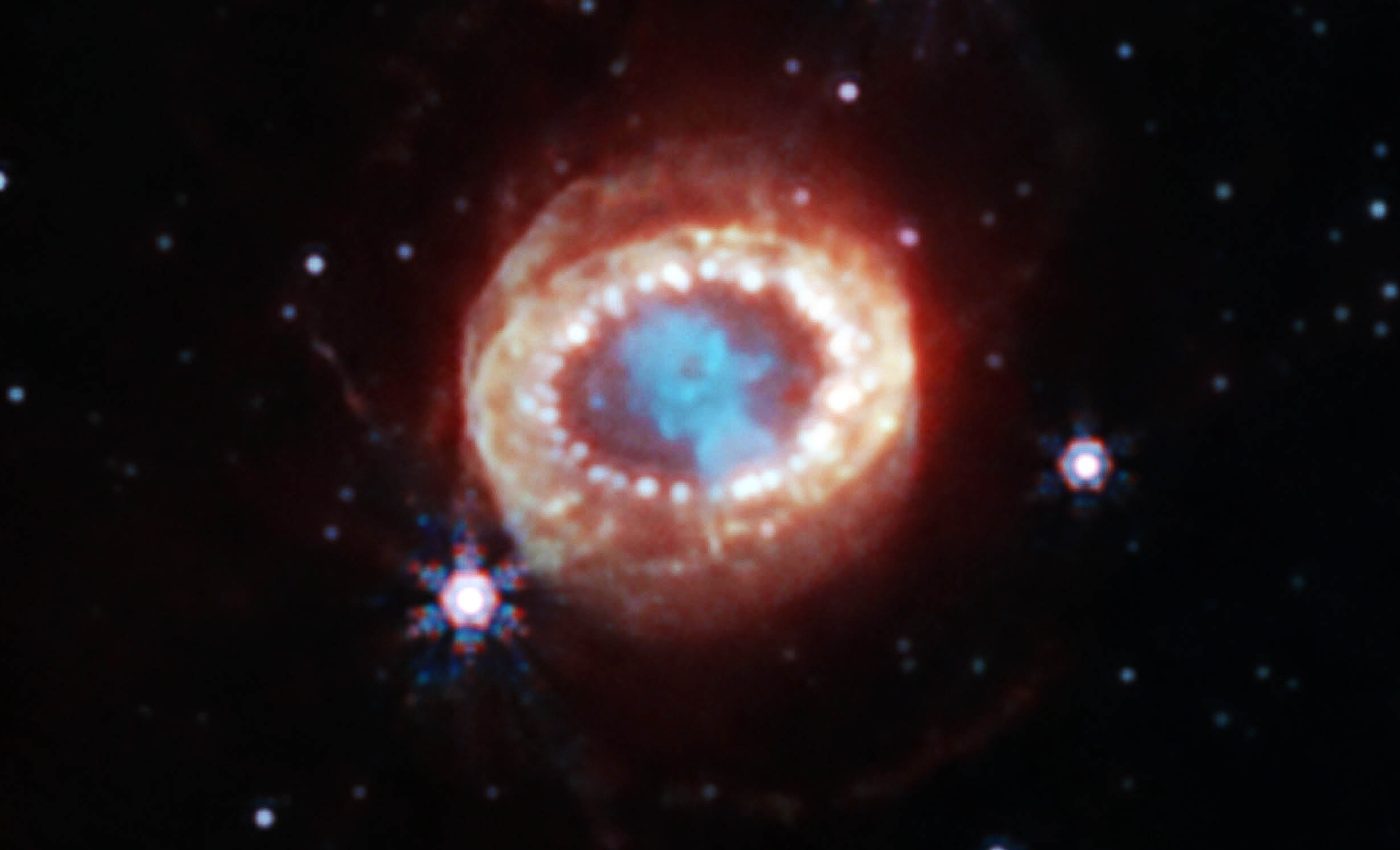
'String of pearls' found around supernova is visible from Earth with the naked eye
Celestial events often captivate astronomers and ignite the imaginations of space enthusiasts and casual observers alike. A prime example of this is the supernova explosion SN 1987A.
Supernova SN 1987A erupted approximately 160,000 light-years away in the Large Magellanic Cloud, a satellite galaxy of our Milky Way, and is still visible today from Earth with the naked eye.
This spectacular explosion was especially intriguing because it gave us a unique chance to study the life cycle of stars and how they meet their end.
Fast forward to today, and we have exciting news from NASA’s James Webb Space Telescope (JWST) — they’ve confirmed the existence of a neutron star hidden within the remains of SN 1987A.
This discovery is huge, as neutron stars are incredibly dense and act like laboratories for understanding the fundamental properties of matter under extreme conditions.
Unpacking supernova SN 1987a
Supernovae are like cosmic fireworks marking the end of massive stars. They light up the universe with incredible energy and can shine brightly for months.
Here’s a fun fact about SN 1987A: it’s a core-collapse supernova, and it was the first one visible from Earth without a telescope in nearly 400 years.
Claes Fransson from Stockholm University leads the latest SN 1987A study. He explains that theoretical models and a pre-explosion neutrino burst hinted at the formation of a neutron star or black hole.
“With this observatory, we’ve now found direct evidence for emissions triggered by the newborn compact object,” Fransson states. He believes this object is most likely a neutron star.
Stellar needle in a cosmic haystack
Since this supernova explosion, astronomers have been on the hunt for the compact object at its core, which is thought to be either a neutron star or a black hole.
This search has been tricky, but thanks to the Webb Telescope, which launched in July 2022, we now have the best evidence so far.
The team used the Medium Resolution Spectrograph (MRS) mode of Webb’s MIRI (Mid-Infrared Instrument), which members of the same team helped to develop. The MRS is a type of instrument known as an Integral Field Unit (IFU).
This instrument suggests there’s a highly energetic source, most likely the elusive neutron star that researchers have been trying to spot.
Fransson, a key player in this research, highlights the importance of these findings, saying, “To create these ions that we observed in the ejecta, it was clear that there had to be a source of high-energy radiation in the center of the SN 1987A remnant.”
He adds that the analysis led to the conclusion that only a few scenarios make sense here, and interestingly, all of them point to the existence of a newly born neutron star.
SN 1987A: Bigger ripple in the space pond
JWST has fundamentally changed how we study the cosmos. Regarding SN 1987A, the telescope’s IFU allows scientists to simultaneously image the object while obtaining its spectrum, empowering us to understand the physical processes happening within the remnant.
So, what’s the big deal about finding a neutron star in SN 1987A? For one, it helps us refine our models of how massive stars evolve and ultimately meet their end.
This could lead us to better understand extreme cosmic objects like neutron stars and black holes. Besides, findings from SN 1987A could assist astronomers in interpreting other supernova remnants like the Crab Nebula.
Watching stars explode in real time
The quest doesn’t end with this discovery. Future observations using JWST and ground-based telescopes will help us understand the properties of this neutron star and how it came to be.
As we continue to study SN 1987A, we are essentially watching changes in real time, giving us a front-row seat to the complex dance of stellar death and rebirth.
Thanks to JWST, we now know a neutron star exists amidst the remains of SN 1987A, laying to rest a mystery that has intrigued astronomers for decades.
As research forges ahead, we can only anticipate more awe-inspiring discoveries, further enriching our understanding of the cosmos. So, next time you look up at the night sky, remember, there’s a lot more going on than meets the eye.
The full study was published in the journal Science.
—–
Like what you read? Subscribe to our newsletter for engaging articles, exclusive content, and the latest updates.
Check us out on EarthSnap, a free app brought to you by Eric Ralls and Earth.com.
—–













